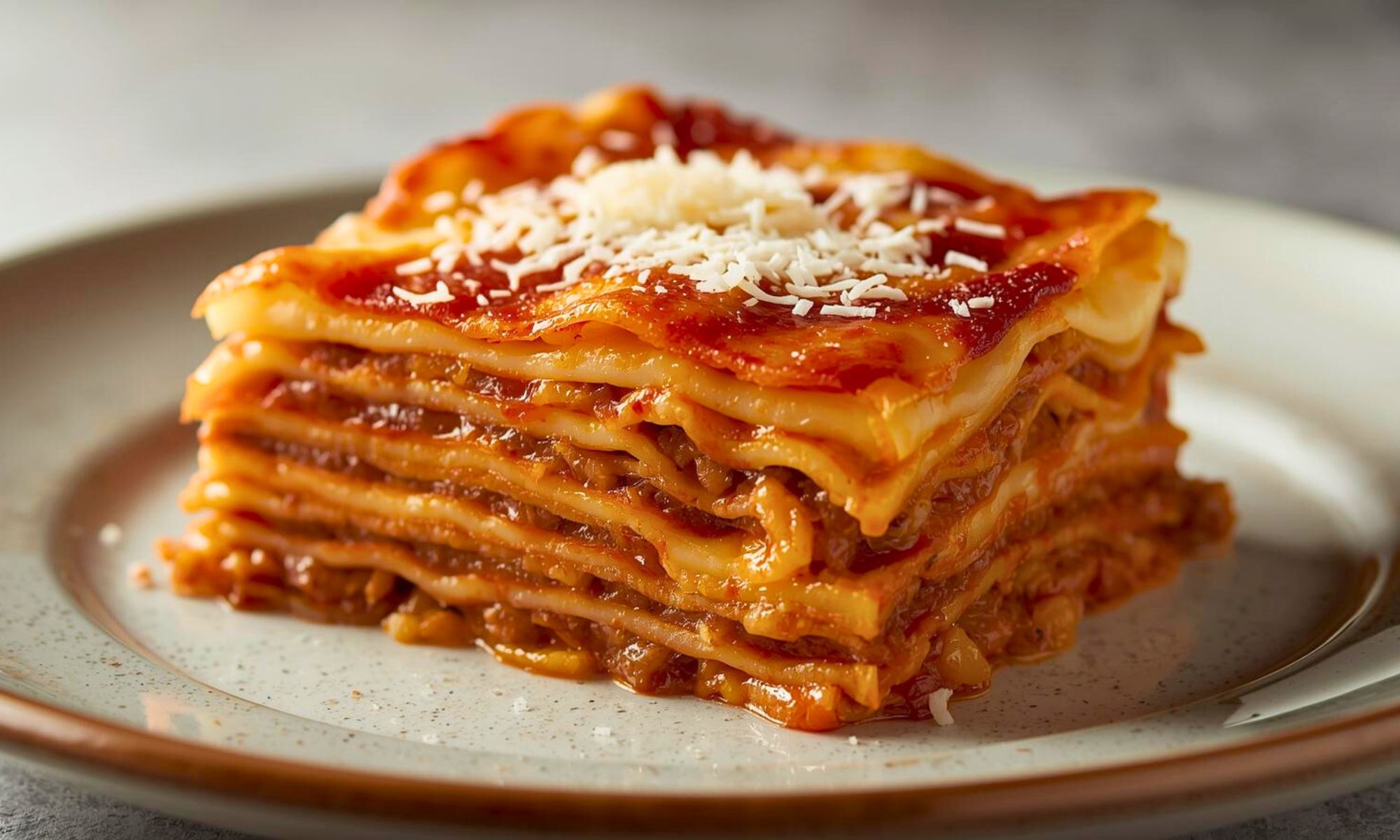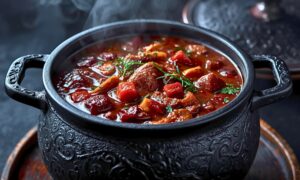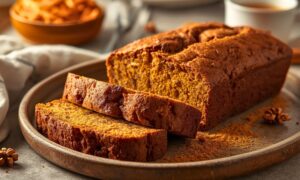My phone buzzed at midnight. My best friend, panicking. Her promotion dinner was in twelve hours. She’d promised homemade lasagna to her new boss. She’d never made it before. We talked her through it via video call. It turned out perfect. That night proved something powerful: a great lasagna recipe isn’t reserved for Italian grandmas or fancy chefs. It’s for busy people like us who need impressive results without culinary school. Modern life moves fast, but the right lasagna recipe? That’s your secret weapon for slowing down time at the dinner table while fitting your hectic schedule.
Lasagna is comfort food architecture at its finest. It’s weeknight friendly once you know the shortcuts. It’s meal prep royalty that feeds you for days. It’s freezer insurance when life gets crazy. And honestly? This lasagna recipe transforms you from “I can’t cook” to “everyone wants my recipe” faster than any dish I know. Master this, and you’ve got confidence that carries into every other cooking adventure.
Why This Lasagna Recipe Works for Modern Cooks
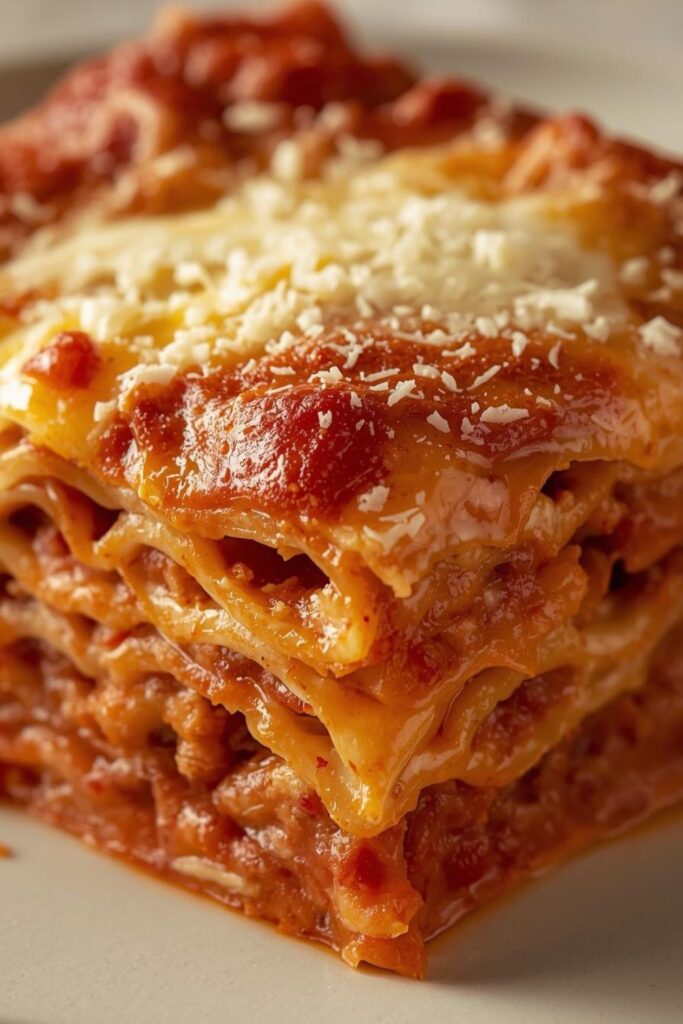
Here’s the truth nobody mentions upfront. Traditional recipes assume you’ve got all afternoon. Real life? You’re juggling work emails, kids’ soccer, and trying to eat something that isn’t takeout. This approach bridges that gap beautifully.
But here’s the real secret most cookbooks skip, practicality doesn’t mean compromise. You can still get deep flavor and that soul-satisfying comfort even when you’re short on time. It’s all about smart shortcuts, layering flavor with intention, and knowing which steps truly matter.
I’ve tested these variations during my busiest months. Single parent weeks. Work deadline crunches. Holiday chaos. Every single version survived my real world kitchen stress tests. What you’re getting is battle tested, time efficient, and actually delicious.
The magic of great lasagna lives in balance. Rich meat sauce needs creamy cheese to soften it. Mozzarella provides that legendary cheese pull. Pasta gives everything structure. When these elements work together? Dinner table silence means you absolutely nailed it.
The Foundation: Understanding Lasagna Like a Pro
Think of lasagna as edible engineering. Bottom layer needs generous sauce to prevent sticking. Middle layers get the flavor party started. Top layer? That’s your golden, bubbly showstopper moment.
Traditional Italian lasagne uses béchamel instead of ricotta. Mind blowing, right? Americans lean heavy on ricotta and mozzarella. Both styles are totally legitimate. Choose based on your taste preferences.
The pasta matters more than most people realize. Fresh sheets cook faster, taste silkier. Dried noodles work perfectly too with proper preparation. No boil noodles save precious time on weeknights.
Temperature control changes everything here. Too hot and cheese separates into grease. Too cool and nothing melds properly. We’re finding that perfect bubble and brown zone.
The Core Components Explained
Sauce: Your flavor foundation starts here. Whether simmering ragù for hours or enhancing jarred sauce, it needs body. Watery sauce equals disappointing, soggy results.
Cheese: Multiple cheeses create complexity. Ricotta adds creaminess. Mozzarella gives Instagram worthy cheese pulls. Parmesan brings nutty, salty depth.
Pasta: Your structural framework. Needs tenderness without mushiness. Cooked just enough to absorb sauce beautifully.
Seasoning: This is pure personality. Fresh basil versus dried oregano shifts the vibe. Garlic intensity and red pepper heat make it yours.
Classic Lasagna Recipe: Three Winning Variations
Traditional Meat Lasagna Recipe: The Sunday Dinner Champion
This is the version that fills houses with irresistible aromas. It’s hearty, satisfying, and freezes beautifully for future meals. When people think lasagna, this is it.
The meat sauce here is simplified Bolognese. Ground beef gets browned with aromatics. Tomatoes break down into silky richness. Time does most work, you’re just guiding along.
This version feeds eight people easily. Or feeds four with glorious leftovers. Either way, you’re winning at meal planning.
Vegetarian Lasagna Recipe That Meat Eaters Crave
Loaded with roasted vegetables, this surprises everyone constantly. It’s not compromise food, it’s legitimately delicious. Zucchini, eggplant, peppers, and spinach create flavor depth.
The trick? Roast those veggies first. This concentrates flavor and removes moisture. Raw vegetables release water during baking. That creates soup, not dinner.
Quick Weeknight Lasagna Recipe for Busy Lives
Real talk: sometimes you need lasagna on Tuesday. This streamlined lasagna recipe uses no boil noodles and smart shortcuts. Thirty minutes of assembly, forty in the oven.
Store bought rotisserie chicken, quality jarred sauce, pre shredded cheese. These become your weeknight allies. No shame in efficiency here.
Ingredients & Smart Swaps
For Classic Meat Lasagna Recipe
The Meat Sauce:
- 2 pounds ground beef (or half beef, half sausage)
- 1 large onion, finely diced
- 6 cloves garlic, minced
- Two 28 ounce cans crushed tomatoes
- One 6 ounce can tomato paste
- 1/2 cup red wine (or beef broth)
- 2 tablespoons olive oil
- 2 teaspoons dried oregano
- 1 teaspoon dried basil
- Salt and black pepper to taste
- Pinch of sugar
The Cheese Mixture:
- 32 ounces whole milk ricotta
- 2 large eggs
- 1 cup grated Parmesan cheese
- 1/4 cup fresh parsley, chopped
- 1/2 teaspoon salt
- Fresh nutmeg, few grates
The Assembly:
- 1 pound lasagna noodles (about 16 sheets)
- 1 pound fresh mozzarella, sliced thin
- 2 cups shredded mozzarella
- Extra Parmesan for topping
Ingredient Intelligence
Can’t find fresh mozzarella? Pre shredded works fine. It’s drier, so add extra sauce between layers.
Ricotta too pricey? Cottage cheese works beautifully. Blend it smooth for creamy texture. Or mix equal parts cottage cheese and cream cheese.
No red wine? Beef broth adds depth perfectly. Even water works with good tomatoes. A splash of balsamic gives similar complexity.
Ground turkey or chicken makes lighter versions. Just add extra olive oil since they’re leaner. Maybe boost Italian sausage ratio for flavor.
Fresh herbs beat dried every time. But dried works fine, just use less. The rule: one tablespoon fresh equals one teaspoon dried.
Shopping Like a Pro
Pick tomatoes carefully. San Marzano tomatoes are worth the upcharge. Sweeter, less acidic, better texture overall.
For ricotta, check ingredients. Should just say milk, cream, salt. Weird stabilizers? Pass on those.
Mozzarella decision time: fresh gives authentic flavor. Pre shredded melts easier and faster. I mix both for best results.
Buy pasta on sale and stock up. It keeps forever in the pantry. Having noodles ready means you’re always one sauce away.
Step by Step Lasagna Recipe Instructions
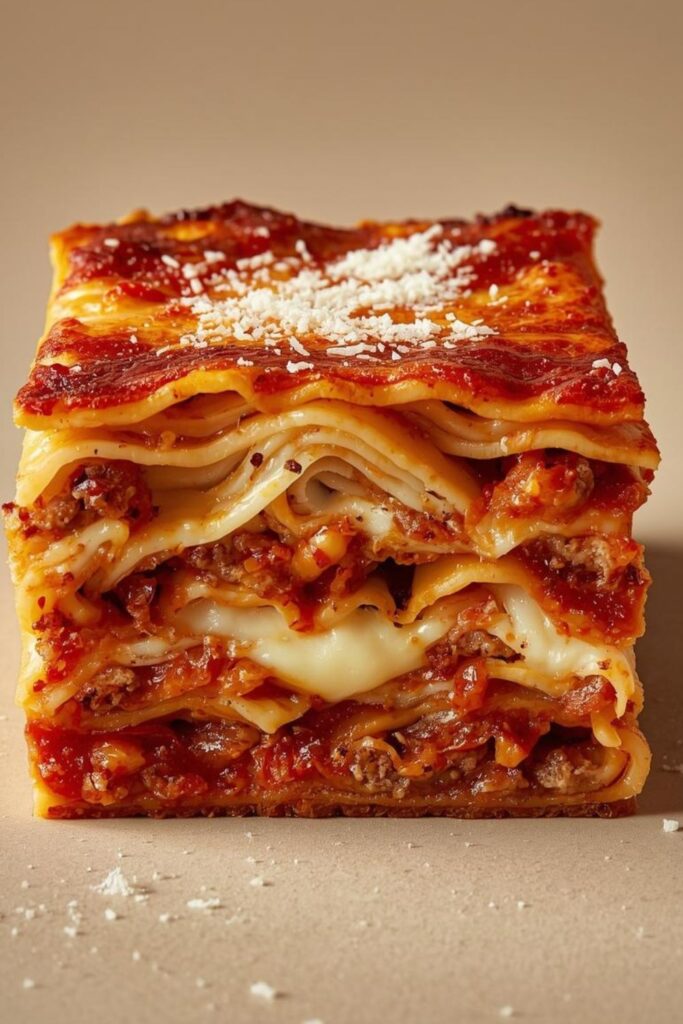
Building Your Meat Sauce
Heat olive oil in your biggest, heaviest pot. Dutch oven territory here. Medium high heat until it shimmers.
Toss in ground meat. Break it up with a wooden spoon. Let it brown, really brown. Those caramelized bits equal flavor gold.
When meat’s nicely browned, push it aside. Add onions to empty space. They’ll soak up meat drippings beautifully. Cook until soft and sweet.
Garlic goes in next. Thirty seconds, just until fragrant. Burnt garlic turns bitter fast.
Pour in wine if using it. Let it bubble and reduce by half. This concentrates flavor and burns off alcohol.
Add tomatoes, tomato paste, herbs, salt, pepper, sugar. Stir it all together. Bring to simmer, then drop heat low.
Now comes magic: time. Let this sauce bubble gently for at least one hour. Two hours is better. Stir occasionally.
The sauce should thicken and darken significantly. Flavors meld and deepen. Taste it, adjust seasoning now.
Preparing Your Cheese Mixture
Dump ricotta in a big bowl. Crack in your eggs. This helps everything bind during baking.
Add Parmesan, parsley, salt, and few nutmeg grates. Nutmeg seems weird but it’s traditional Italian. Just tiny bit adds mysterious warmth.
Mix thoroughly. Should look creamy and uniform. Taste it now. Needs more salt? Fix it.
Cooking Your Noodles (If Using Traditional)
Bring huge pot of water to boil. Salt it like the ocean, seriously salty.
Drop noodles in one at a time. Stir immediately so they don’t stick together. Cook until just barely bendable.
Drain and lay flat on oiled baking sheets. Little olive oil drizzle prevents sticking completely.
Assembly: Where It All Comes Together
Preheat oven to 375°F. Grab a 9×13 inch baking dish.
Spread one cup meat sauce across the bottom. This prevents sticking and gives moisture from below.
Lay down first noodle layer. Slightly overlapping is fine. You want complete coverage.
Spread a third of ricotta mixture over noodles. Use back of spoon. Doesn’t need perfection.
Add a third of remaining meat sauce. Be generous here.
Lay on some fresh mozzarella slices. Not too much, more layers coming.
Repeat this sequence two more times. Noodles, ricotta, sauce, mozzarella. You’re building flavor architecture.
Final noodle layer goes on top. Cover with remaining sauce. Go right to edges. Sprinkle generously with shredded mozzarella and Parmesan.
The Baking Process
Cover pan tightly with aluminum foil. Make sure it doesn’t touch the cheese, tent it.
Bake covered for 40 minutes. This cooks everything through without burning.
Remove foil. Crank heat to 400°F. Bake another 15 minutes until golden and bubbling.
Here’s the hardest part: let it rest. Twenty minutes minimum. Patience pays off with perfect slices.
Common Lasagna Recipe Mistakes and How to Avoid Them
Watery lasagna: Your sauce was too thin. Or vegetables released moisture. Thicker sauce, pre cook veggies, less per layer.
Dry lasagna: Not enough sauce between layers. Every noodle needs moisture to cook. Be generous.
Burnt top before done: Oven too hot or foil removed early. Cover longer, watch temperature.
Layers sliding everywhere: Didn’t let it rest properly. Patience makes perfect slices.
Bland flavor: Under seasoned sauce. Taste as you go. Don’t fear salt.
Creative Variations Worth Trying
Swap meat for seafood. Shrimp, crab, scallops in white wine sauce with béchamel? Incredible.
Go breakfast lasagna. Eggs, breakfast sausage, hash browns, cheese. Weekend brunch elevated.
Mexican inspired works beautifully. Ground beef with taco seasoning, salsa instead of marinara, pepper jack cheese.
Add pesto between layers for herbaceous brightness. Just thin smear changes everything.
Butternut squash and sage with brown butter béchamel. Fall on a plate.
The Science Behind Great Lasagna
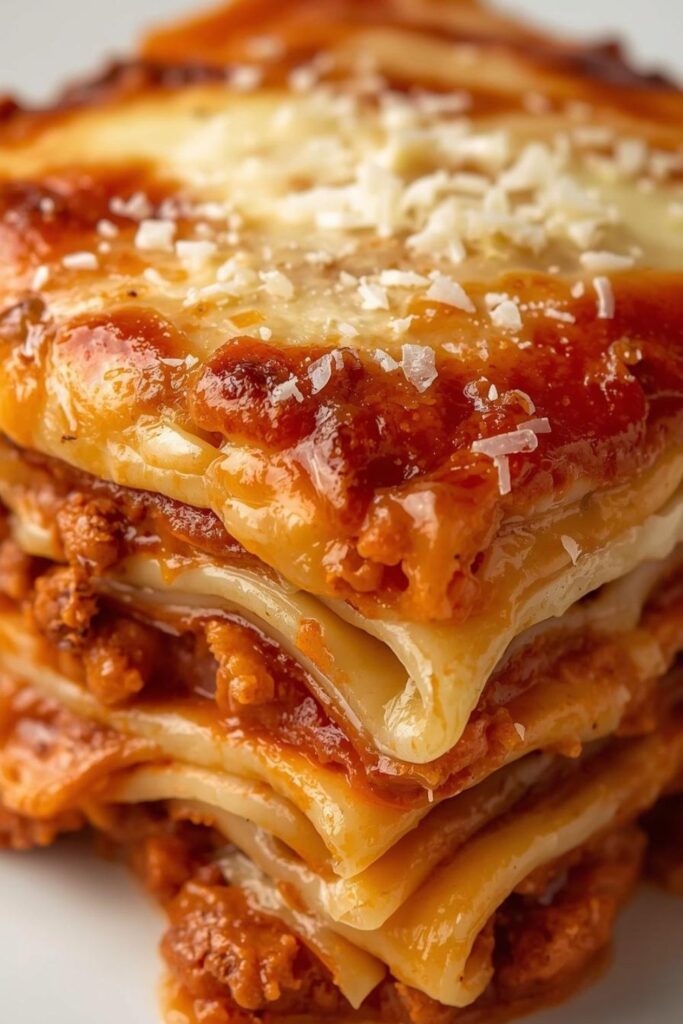
Why Browning Meat Matters
When protein hits hot pan, the Maillard reaction happens. Amino acids and sugars react under heat. This creates hundreds of new flavor compounds.
That’s why gray boiled beef tastes flat. Browned beef tastes complex and rich. Always brown meat properly.
The Cheese Science
Mozzarella’s high moisture and specific protein structure creates cheese pulls. As it melts, proteins unwind and stretch.
Parmesan’s aged, crystalline structure adds umami depth. Those crunchy bits? Tyrosine crystals. They’re flavor bombs.
Ricotta’s mild, creamy texture comes from whey proteins. It doesn’t melt, it sets. That’s why it stays creamy.
Temperature and Texture Explained
Baking at 375°F is the sweet spot. Hot enough to bubble and brown. Gentle enough to cook evenly.
Foil coverage creates steam, cooking everything through. Removing it allows browning and flavor concentration.
That rest period? Starches in pasta continue absorbing liquid. Cheese firms up slightly. Everything settles into sliceable layers.
Why Acid Matters in Sauce
Tomatoes are acidic. Sugar balances that tartness. Wine adds different acidic notes, brighter, fruitier.
That wine splash dissolves flavor compounds in meat. It pulls them into sauce. That’s flavor extraction.
The Tool Talk
Heavy pots distribute heat evenly. Thin pots create hot spots and burnt sauce.
Metal pans conduct heat better than glass. Lasagna browns more effectively in metal.
Sharp knife matters for clean slices. Serrated knives work great through layers.
Offset spatulas help serve perfect portions. Slides right under, lifts cleanly.
Making Your Lasagna Recipe Beautiful & Delicious
Plating Like a Restaurant
Let each slice be clean rectangle. Use sharp, wet knife.
Place it flat on plate, not flopped sideways. You want layers visible.
Add small arugula salad on side. Lemon vinaigrette cuts richness perfectly.
Drizzle tiny bit of good olive oil over top. Maybe crack some black pepper.
Fresh basil leaves as garnish add color and aroma. Don’t overthink it.
Perfect Pairings
Wine wise, go Italian. Chianti’s acidity cuts through richness beautifully. Barbera works too. Even simple Sangiovese is lovely.
Side dish? Keep it simple. Garlic bread is classic for good reason.
Caesar salad brings crisp, tangy contrast. Or mixed greens with balsamic.
Roasted broccoli or green beans add color. Simple olive oil and lemon.
Tiramisu for dessert? Full Italian feast. Or gelato for something lighter.
Storage and Reheating
Leftovers improve overnight. Flavors meld and deepen. Actually better day two.
Store covered in fridge up to five days. Reheat individual portions in microwave.
Freeze beautifully. Assemble completely, wrap twice in plastic, then foil. Freeze up to three months.
Bake from frozen works perfectly. Add thirty minutes to cooking time.
Wrapping It Up: Your Lasagna Journey Starts Now
This lasagna recipe isn’t about perfection, it’s about understanding. Once you grasp how layers work, you’ll develop intuition. You’ll know when sauce needs more time. You’ll feel when seasoning’s right.
This dish forgives and flexes with your schedule. Make it Sunday for the week. Assemble morning for dinner tonight. Freeze components separately for ultimate convenience.
What makes lasagna special is connection. It feeds crowds effortlessly. Everyone gets excited when you mention it. That’s food magic right there.
Start with this lasagna recipe as written. Get comfortable with the process. Then start playing. Add favorite vegetables. Try different cheese combinations.
Most importantly? Don’t stress about perfection. Lasagna’s forgiving even with imperfections. Layers forgive a lot. Even “ugly” lasagna tastes incredible.
Trust your instincts. Taste as you go. Cook with love. That’s the real secret behind a lasagna recipe that keeps people coming back.
Frequently Asked Questions
Can I make this lasagna recipe ahead of time?
Absolutely, and I recommend it strongly. Assemble your lasagna completely, cover tightly with plastic and foil. Refrigerate up to two days before baking. Remove from fridge thirty minutes before baking. Add maybe five to ten extra minutes baking. The flavors actually improve with time, everything melds together overnight.
Do I really need to boil lasagna noodles first?
Depends on what you’re using exactly. Traditional noodles need boiling until flexible but not cooked. No boil noodles go straight from box to pan. They absorb moisture from sauce during baking. The catch? You need extra sauce, or they’re crunchy. I prefer texture of traditional noodles personally. No boil saves time and works great with saucy recipes.
Why does my lasagna come out watery?
Usually it’s one of three culprits here. First, your sauce might be too thin. Simmer it longer to concentrate and thicken. Second, vegetables release moisture during cooking. Pre cook and drain veggies like zucchini or mushrooms. Third, not letting it rest after baking. That twenty minute rest lets everything set properly. Cut too early and juices run out.
Can I freeze lasagna after baking it?
Sure can, works beautifully. Let it cool completely first, don’t trap steam. Cut into portions or freeze the whole thing. Wrap tightly in plastic wrap, then aluminum foil. Label with date and contents. Freeze up to three months happily. Reheat portions from frozen in oven at 350°F. Takes about thirty to forty minutes. Cover with foil so top doesn’t burn.
What’s the best cheese combination for this lasagna recipe?
My go to trinity is ricotta, mozzarella, and Parmesan. Ricotta gives creamy richness between layers. Fresh mozzarella adds authentic flavor and gorgeous melting. Shredded mozzarella on top browns beautifully. Parmesan brings salty, umami depth perfectly. The ratio matters, 16 ounces ricotta, 1 pound mozzarella (split between fresh and shredded), 1 cup Parmesan. But honestly? Use what you love. Make it yours.

Swiftly Captions by Tina Smith — Quick, flavorful food recipes made simple, bringing fresh inspiration to your kitchen every day
